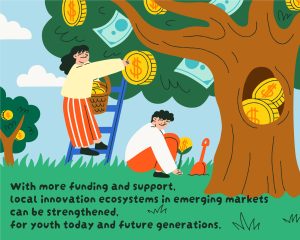Revolutionizing digital classrooms through higher education
Welcome to the era of digital classrooms, where technology is transforming the way we learn and process information. With the rise of online education platforms and the integration of digital tools in traditional classrooms, higher education has undergone a significant revolution. The COVID-19 pandemic has further accelerated this process, forcing educational institutions to adapt to digital learning solutions. In this article, we will explore how higher education is being revolutionized through the use of digital classrooms.
The Power of Technology in Education
Over the years, technology has played a crucial role in the education sector. From the introduction of laptops and projectors to digital textbooks and online courses, there has been a constant effort to enhance the learning experience. However, the recent shift towards digital classrooms goes beyond just integrating technology in education. It is about embracing a new way of teaching and learning that is more efficient, flexible, and accessible.
Flexibility and Accessibility
One of the main advantages of digital classrooms is the flexibility and accessibility it offers. With online learning platforms, students can access course materials and lectures at any time and from anywhere in the world. This eliminates the need for physical attendance and allows students to study at their own pace. It also opens up educational opportunities for individuals who may not have access to traditional higher education due to geographical or financial constraints.
Interactive Learning
Digital classrooms also offer a more interactive learning experience. With the use of digital tools such as videos, simulations, and virtual reality, students can engage with the course material in a more hands-on way. This not only makes the learning process more fun and engaging but also allows for a better understanding and retention of information.
The Impact on Teaching Methods
As digital classrooms continue to gain popularity, there has been a significant shift in teaching methods as well. Traditional lectures and textbooks are being replaced by multimedia presentations and online discussions. This not only makes the learning experience more interactive but also allows for a more personalized and adaptive approach to teaching.
Personalized Learning
Digital classrooms offer the opportunity for personalized learning, where students can learn at their own pace and focus on the areas they need to improve. With the help of technology, teachers can also tailor their teaching methods to cater to the specific needs of each student. This can lead to a more efficient and effective learning process.
Real-time Assessment and Feedback
In traditional classrooms, assessment and feedback can be time-consuming and often delayed. However, with digital classrooms, teachers can use online tools to assess students in real-time and provide instant feedback. This not only saves time but also allows for a more continuous and efficient learning process.
Overcoming Challenges
While the benefits of digital classrooms are evident, there are also some challenges that need to be addressed. One of the main concerns is the digital divide, where not all students have equal access to technology and internet connectivity. This can create a disadvantage for some students and hinder their learning experience. Educational institutions must address this issue and ensure equal access to digital tools for all students.
Cybersecurity
Another challenge is the issue of cybersecurity. With the increasing use of online tools and platforms, the risk of cyber threats also increases. Educational institutions must be aware of these risks and take appropriate measures to protect their students and data from potential cyber attacks.
In Conclusion
Digital classrooms are revolutionizing higher education in many ways. With the use of technology, learning has become more flexible, interactive, and personalized. Teachers can adapt their teaching methods to cater to the needs of each student, and students can access course materials at their convenience. However, it is crucial to address the challenges that come with this transformation to ensure equal opportunities for all students. With the continued evolution of technology, the future of education certainly looks brighter, faster, and more connected than ever before.










